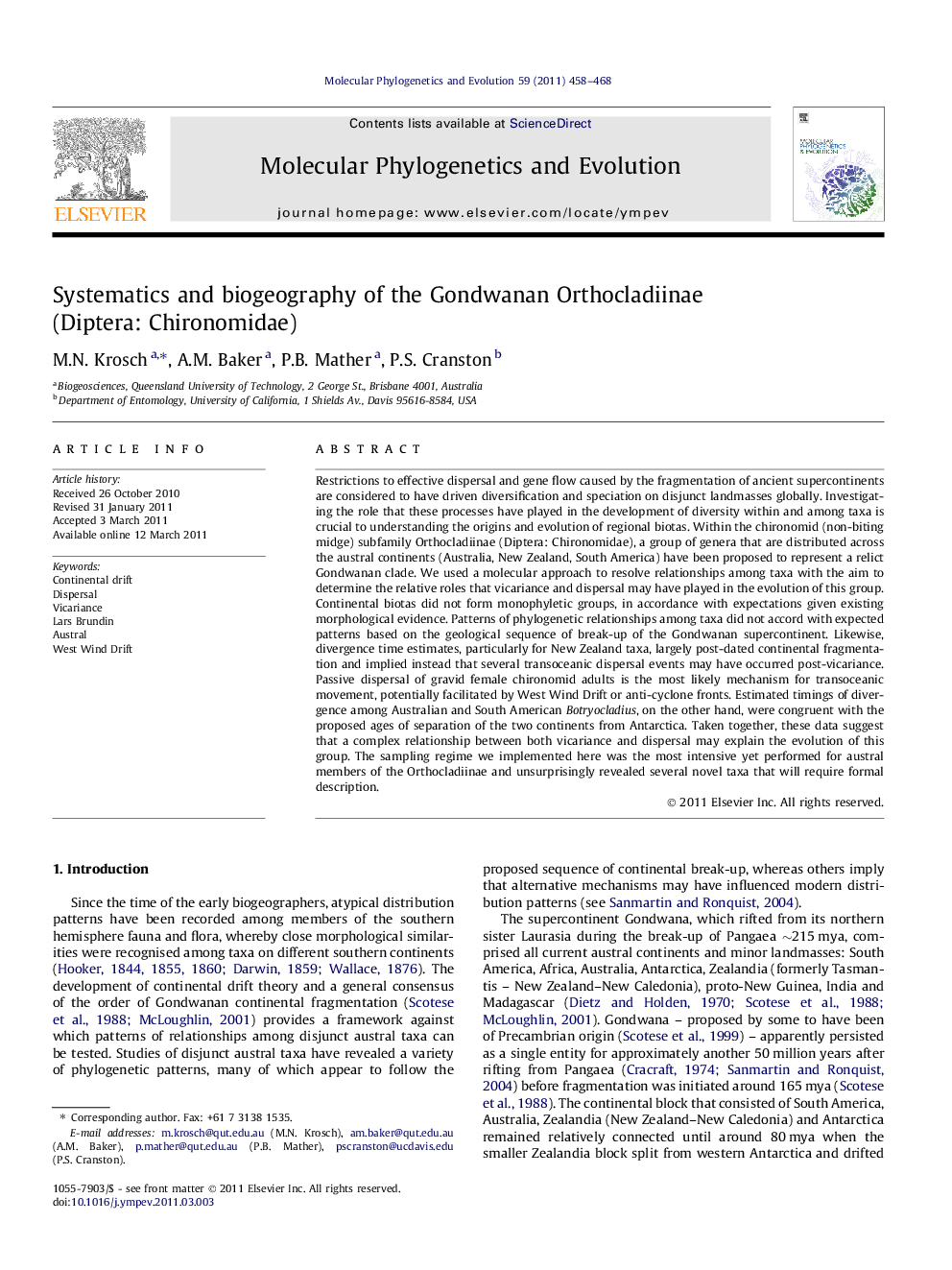| کد مقاله | کد نشریه | سال انتشار | مقاله انگلیسی | نسخه تمام متن |
|---|---|---|---|---|
| 2834221 | 1164299 | 2011 | 11 صفحه PDF | دانلود رایگان |

Restrictions to effective dispersal and gene flow caused by the fragmentation of ancient supercontinents are considered to have driven diversification and speciation on disjunct landmasses globally. Investigating the role that these processes have played in the development of diversity within and among taxa is crucial to understanding the origins and evolution of regional biotas. Within the chironomid (non-biting midge) subfamily Orthocladiinae (Diptera: Chironomidae), a group of genera that are distributed across the austral continents (Australia, New Zealand, South America) have been proposed to represent a relict Gondwanan clade. We used a molecular approach to resolve relationships among taxa with the aim to determine the relative roles that vicariance and dispersal may have played in the evolution of this group. Continental biotas did not form monophyletic groups, in accordance with expectations given existing morphological evidence. Patterns of phylogenetic relationships among taxa did not accord with expected patterns based on the geological sequence of break-up of the Gondwanan supercontinent. Likewise, divergence time estimates, particularly for New Zealand taxa, largely post-dated continental fragmentation and implied instead that several transoceanic dispersal events may have occurred post-vicariance. Passive dispersal of gravid female chironomid adults is the most likely mechanism for transoceanic movement, potentially facilitated by West Wind Drift or anti-cyclone fronts. Estimated timings of divergence among Australian and South American Botryocladius, on the other hand, were congruent with the proposed ages of separation of the two continents from Antarctica. Taken together, these data suggest that a complex relationship between both vicariance and dispersal may explain the evolution of this group. The sampling regime we implemented here was the most intensive yet performed for austral members of the Orthocladiinae and unsurprisingly revealed several novel taxa that will require formal description.
Figure optionsDownload as PowerPoint slideHighlights
► Molecular groupings largely supported morphology-based taxonomic assignment.
► Pattern of relationships did not follow geological sequence of continental break-up.
► Estimated divergence times largely post-dated timing of continental fragmentation.
► Transoceanic dispersal considered to be important in the evolution of this group.
► Several novel taxa discovered that will require formal description.
Journal: Molecular Phylogenetics and Evolution - Volume 59, Issue 2, May 2011, Pages 458–468